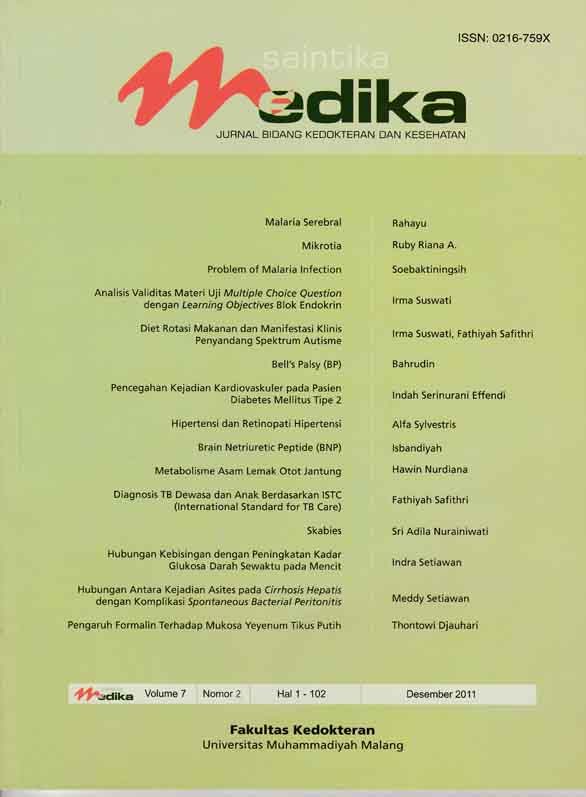Pencegahan Kejadian Kardiovaskuler pada Pasien Diabetes Mellitus Tipe 2
DOI:
https://doi.org/10.22219/sm.v7i2.4074Abstract
WHO memprediksi adanya peningkatan angka insiden dan prevalensi Diabetes Mellitus (DM) tipe2 diberbagai penjuru dunia . Untuk Indonesia ,WHO meprediksi kenaikan jumlah pasien dari 8,4 juta pada tahun 2000 menjadi sekitar 21,3 juta pada tahun 2030. Suatu jumlah yang sangat besar dan merupakan beban yang sangat berat untuk dapat ditangani sendiri oleh dokter spesialis/ sub spesialis, maka perlu strategi pelayanan kesehatan primer sebagai ujung tombak menjadi sangat penting untuk lebih berperan dalam penanganan DM sederhana dan mencegah terjadinya penyulit DM, antara lain risiko penyakit kardiovaskuler. Perlu penangan terpadu pada penyakit tidak menular dan berkesinambungan. Dibutuhkan kontrol rutin antara lain gula darah puasa <130 mg/dl , gula darah 2jpp <200 mg/dl, HbA1c <7, Tensi 130/80 mm Hg , Total cholesterol < 200 mg/dl, Kholesterol LDL < 160 mg/dl, Kholesterol HDL > 50mg/dl . Disamping itu perlu menilai risiko Kardiovaskuler dengan Framingham Risk Score (FRS).
Kata kunci : Diabetes Mellitus, Risiko Kardiovaskuler, Framingham Risk Score.
Downloads
Downloads
Published
Issue
Section
License
Authors who publish with this journal agree to the following terms:
- Authors retain copyright and grant the journal right of first publication with the work simultaneously licensed under a Creative Commons Attribution-ShareAlike 4.0 International License that allows others to share the work with an acknowledgment of the work's authorship and initial publication in this journal.
- Authors are able to enter into separate, additional contractual arrangements for the non-exclusive distribution of the journal's published version of the work (e.g., post it to an institutional repository or publish it in a book), with an acknowledgment of its initial publication in this journal.
- Authors are permitted and encouraged to post their work online (e.g., in institutional repositories or on their website) prior to and during the submission process, as it can lead to productive exchanges, as well as earlier and greater citation of published work (See The Effect of Open Access).

This work is licensed under a Creative Commons Attribution-ShareAlike 4.0 International License.
















